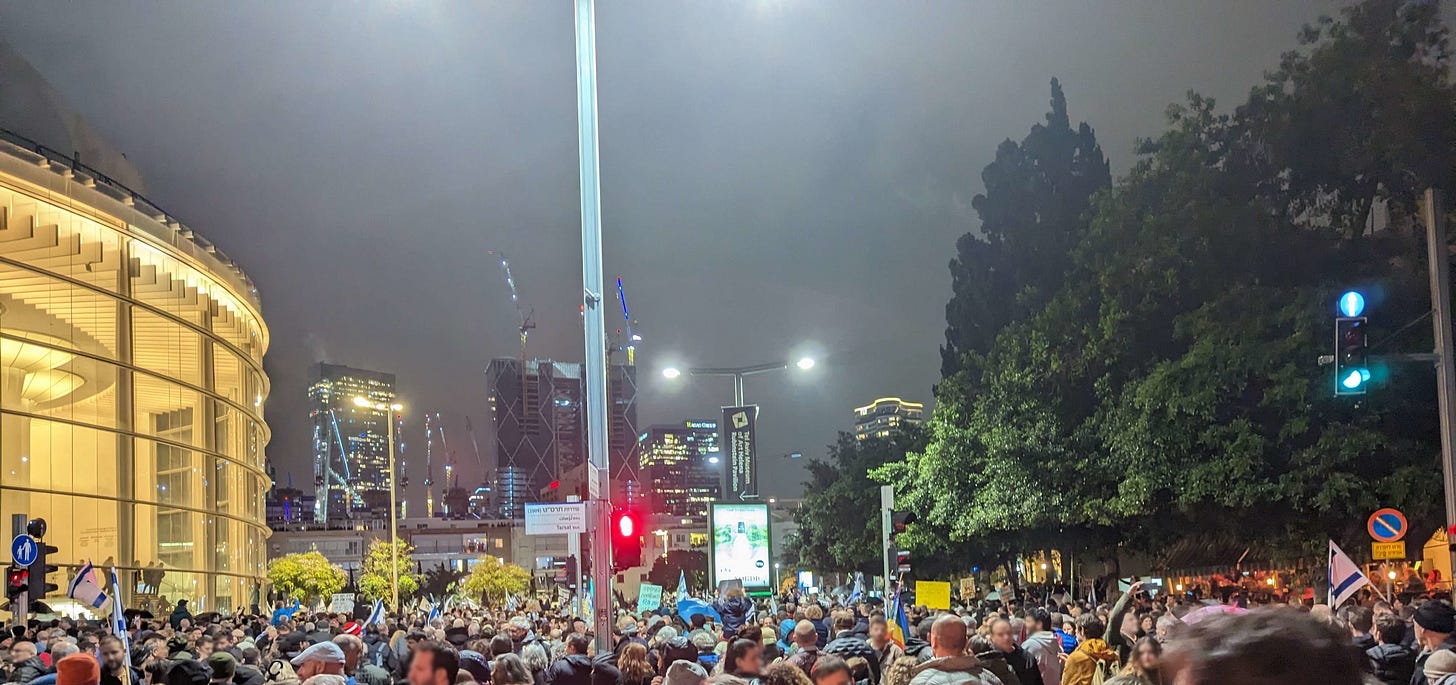Hey America, time to go on strike!
Trump's power grabs, indifference to law, could spark a nationwide walkout sooner than later.
Hey America, time to go on strike!
Say whatever you will about Israelis, but they sure know how to go on strike.
That’s a lesson we Americans must learn – and fast.
Before Hamas’ criminal attack of Oct. 7, 2023, hundreds of thousands of Israelis took to the streets in nationwide protests, pushing back against an out-of-control national government attempting a hostile takeover of the courts. Israelis rightly felt the independence of their judiciary – the one check on their government’s excesses – was at stake.
So, they walked out. Flag-waving Israelis of every stripe – young and old, Jew and non-Jew, observant and secular, conservative and liberal – marched in the streets, lending their voices to a chorus of dissent that was heard in Jerusalem and around the world.
The Histadrut labor union called for a general strike nationwide, bringing much of the country to a grinding halt. Businesses closed; highways were blocked. Ben Gurion Airport and the seaports at Haifa and Ashdod all shut down. Thousands of military reservists threatened not to report for duty. Even doctors said they would strike.
Universities canceled classes. Diplomatic staff, both in Israel and abroad, walked off their jobs. Firehalls and hospitals stayed open, but only for essential services.
At the time, I was the U.S. liaison for an Israeli NPO founded to build bridges between the Galilee’s many religions. My director joined the protests.
Israelis felt a camaraderie and passion for the fight to save their country from encroaching authoritarianism.
It worked, at least for a while. (The regime of Prime Minister Benjamin Netanyahu has renewed its efforts to take over the courts). Still, this general strike riveted world attention on Israel like few other actions short of war can do. It’s no wonder that Israelis, repulsed by their governments brutal war in Gaza and the low priority it attaches to freeing the remaining hostages, have been taking to the streets again in massive numbers.
The point is clear: When the people of a country – any quasi-free country – stand up and strike – they get noticed.
Now is the time for Americans to do the same, as a growing chorus of American leaders are saying.
Asked what recourse Americans would have if the Trump administration systematically defies court orders, Anthony Romero, executive director of the ACLU, didn’t mince words.
“We’ve got to shut down this country,” he said.
U.S. Rep. Jim McGovern, D-Massachusetts, echoed the same sentiment: “We can’t just sit back and let our democracy just fall apart. What we need to think about are things like maybe a national strike across this country.”
And Sara Nelson, head of the Association of Flight Attendants, said American workers now have “very few options but to join together to organize for a general strike.”
When Americans no longer feel safe, or even free to speak, in their own cities because armed soldiers and federal agents are walking the streets, grabbing people (including citizens), and whisking them away to unknown locations without any due process, it’s time to break the glass and pull the alarm.
Merriam-Webster defines a strike in many ways, one being: “a temporary stopping of normal activities in protest against an act or condition.”
Nothing is normal about the time in which we live, so our activities shouldn’t be normal either.
Organizing a general strike wouldn’t be easy, and let’s keep in mind that Israel is a country of 10 million people compared to 340 million in the United States. A nationwide walkout that pulls together every facet of American society here would require considerable planning, promotion, cooperation and execution.
A tall order, but not impossible.
We’ve seen general strikes before, on smaller scales: Seattle, 1919, when 60,000 people walked out for five days in support of shipyard workers; the West Coast Waterfront Strike, 1934, a violent labor action by west coast longshoremen that left nine people dead, approximately 1,000 injured and 500 under arrest; Occupy Wall Street, an anti-corporate greed movement of 2011, that started in New York then morphed into some 1,000 protests across the country.
Most recently, the June 14 No Kings Day, a nationwide protest against the Soviet-style military parade in Washington on Trump’s birthday, drew 4.8 million people to 2,150 actions in all 50 states, proving that Americans will still turn out en masse.
What would a general strike here look like?
First, maybe call it something else. Jeremy Brecher, author and activist, prefers “social strike” to general strike, differentiating between a popular action and a purely labor one. Writing for wagingnonviolence.org, an NPO that covers social movements, Brecher said a social strike would still require broad labor support and grassroots organizing.
Participants would have to prepare themselves for reprisals. With armed National Guardsmen and masked federal agents on the streets, government repression can’t be discounted. Also, a big segment of the MAGA, conservative, vigilante population would likely see a social strike as some sort of leftwing threat and take matters into their own hands.
This is not without risks. So, before we stop going to work or school, before we boycott anyone or anything, before we gather in public spaces to voice our discontent, let’s make sure we go into this with a strategic plan and our eyes wide open.
But never forget that the people have power, great power. When we choose to use it, the powerful get nervous.
Which is exactly what happened in Israel. True, the protestors there have yet to achieve their goals as their government remains defiant, but they continue to turn out with their flags, bullhorns and signs, demanding that the prime minister listen.
They haven’t given up. Neither can we
Israelis launched a nationwide protest in 2023, opposing their government’s effort to take control of the courts. (Wikipedia photo, in the public domain)




Well written. Good points.